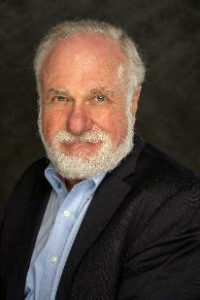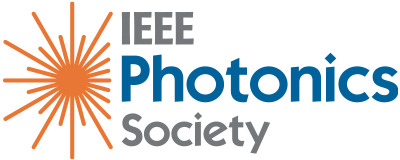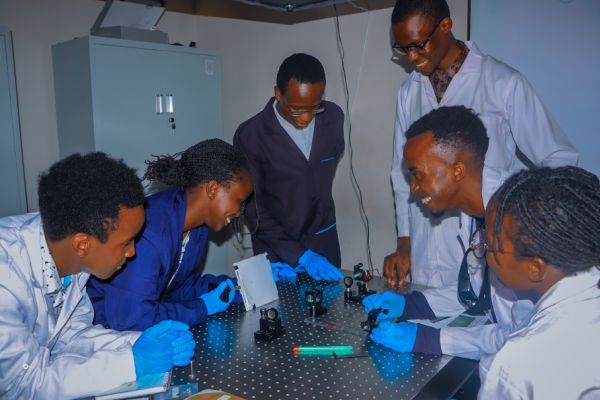The success of a high-tech startup will depend very strongly on the strength of its team. This is a self-evident truth. It is true for all companies, of any size, but it is particularly true for smaller organizations that are in the early stages of their business trajectory. Thus, it is of fundamental importance to pay careful attention to both who should be hired and the process by which people are being hired. This article is a personal view about the general topic of hiring, rooted on the author’s experience.
(Note to the Editors: This picture is from Getty Images and appeared in “Inc.”, link to the article: 6 Things the Smartest Leaders Do to Hire and Keep Great Employees | Inc.com If the copyright of this picture makes it difficult to include it here, any other picture of similar nature would be fine )
Identifying candidates
Regarding whom to hire in a startup, there are three main categories of people to focus on:
- Those who bring expertise that currently does not exist in the company
- Most high-tech companies are founded by highly competent technical individuals with limited expertise in areas outside of their technical expertise.
- Make sure to add experienced people in the many aspects required for business success, including the so called “soft” skills, such as product definition / development, program management and finance, for example
- Those with extraordinary skills, who can expand the company’s expertise and will leave a mark – they are clearly a major addition to the team’s strength
- People who can significantly expand profitable activities in the company are a rare commodity. Be always in the lookout for these individuals and do your best to bring them on board when you identify one – these are the people that are going to shape and grow the company
- The two categories of people indicated above should always receive special attention. These are the people that become the core of the company, a group which is continuously expanding as the company grows. The third category is formed by the next layers of contributors, and these are important to build up as well, of course, guided by the people at the core.
The startup should have a hiring plan covering the next 12 – 24 months driven by the startup’s vision, culture and business development plan. The plan should indicate the positions that need to be filled up to support growth, both at the core and adjacent layers, both “hard” and “soft” skills At the same time, the hiring plan should provide flexibility to hire those outstanding individuals that become available as an opportunity, people who will return the cost of their addition multiplied many-fold.
Finding potential candidates is not easy, requires effort, for which it is useful to utilize the following:
- The professional contacts network of the existing team – this is a very effective tool to identify candidates that already have an interest in joining the enterprise – referrals are typically the main source of applicants in a startup
- Building your brand – participate in social media to build up your brand – potential candidates are not only looking for a job, but an interesting company on a mission where they can realize their dreams
- Avoid sterile standard job descriptions – job seekers will not feel you are offering them their dream job if the description appears standard and automated – Make the job descriptions engaging, creatively memorable and at the same time easy to read. Emphasize what makes working for the company unique – make the job postings personal so that candidates can relate to it.
- Networking events, such as job fairs, technical conferences, professional society events are a good source of potential candidates
- Bottom line, attracting candidates requires creative effort, simply posting a job description on a website and waiting for applicants will not go very far
Truths about Interviewing
The interview process should be designed such that it maximizes the probability that the selected candidate fits reasonably well the position and the company culture. It is expensive to select the wrong person, not only for the time and effort wasted in identifying and training the person but many times there can also be a negative impact on the team morale with a misfit.
Having said that, you will not be able to determine with 100% confidence whether the candidate fits well the position and the company culture from just one interview. There is no magic formula that will ensure 100 % success, but processes can be set up that maximize the chances of a positive outcome. We will review the main elements of such a process here.
You should evaluate the person on the following aspects:
- Knowledge and ability required for the specific position
- Specific questions about the person’s expertise should be asked, of course
- Requesting the candidate for a technical presentation on their subject matter can offer an insight into their level of expertise – the presentation should offer opportunities for technical and work habit questions from the interviewing group
- Brief specific tests can also be included, for example:
- Dexterity tests for individuals that need to handle delicate and/or small objects
- Basic knowledge in physics, chemistry, biology, sales methods, finance or the relevant discipline that is needed for the position
- General intellectual capabilities – hire for potential as well as for experience – when to take a chance on a job candidate that doesn’t have all the experience aspects needed for the position but seems to be highly capable?
Talk to the candidate trying to answer the following questions:
- Can this person solve problems?
- Is this person creative?
- Is this person logical?
- Does this person have common sense?
- Can this person learn fast?
- Does this person communicate well?
In my experience, hiring a highly capable individual that needs to learn some of the skills required for the position will pay off most of the times. This is far better than waiting for a candidate that has skills that fit perfectly well with the position needs.
- Fit to company culture and team – here you need to evaluate aspects of:
- Inter-personal skills
- Can this person work well in a team?
- Does this person have a chip-on-his/her shoulder?
- Will we like working with this person?
“Soft” skills are important, and the goal should be to work with people that we like.
- Drive and self-motivation
- Is this person energetic?
- Will this person look for additional tasks and expand their role?
- Potential for self-driven growth?
Try to immerse job candidates in unconventional scenarios to gather the most useful insights about their critical-thinking abilities, tech savviness and interpersonal skills.
You should start the interview by saying something that helps the candidate lower their stress level, you want the person to behave as close as possible to their usual behavior at work. This is for the benefit of the candidate and the interviewing group. A good interview takes on a life of its own, becoming more of a friendly conversation than a formal process.
You will have a view on whether you want to hire the candidate in no more than five minutes. This is somewhat surprising but it happens to most people, it is human nature, it is how we interact with others, we generate a positive or negative bias towards the person very quickly. This is not a problem so long as your cognizant of this phenomenon and you use the next 30 to 60 minutes to consciously verify that your initial “gut feel” is correct or not. This is very important, many times the initial impression will reverse. You should spend as much time interviewing the candidate as is necessary for the type of position. Some general interview time frames are:
- A few minutes for initial “gut-feel” view
- 30 to 60 minutes to verify or counter the “gut-feel” view
- This amount of time is enough for a “low-risk” position – meaning that the candidate is someone local that cannot cause too much damage in their on-boarding time of about 3 months
- 4 to 8 hours to get a higher confidence view on the candidate
- This is the time needed for “higher-risk” positions where the candidate is moving from a distant location and/or could cause significant damage in 3 months, the initial on-boarding period
- Naturally, multiple people should interview the candidate over this time – the recommendation is that the candidate spends some one-on-one time with their direct supervisor and with a few people that will be direct co-workers. In addition, a few group interviews should be scheduled – The number of people that should participate in the interview process depends on whether the position is “low-risk” or “high-risk”; all those who will interact significantly with the person should join the interview, people who will report to this person, colleagues, and people in the chain of command of this person
- It is also recommended to hold several rounds of interviewing. The first conversation can be on the phone or teleconference, including only one or two interviewers, with the intent of screening the candidate before involving more company people – this can be followed by one or more wider interviews – for a “low risk” candidate a virtual interview followed by an in-person conversation is many times enough to decide. “Higher risk” candidates might require multiple virtual meetings and multiple in-person conversations.
- In the past few years, interviewing online has become more common. This can help with the initial candidate selection but should not be used in the final round of interviewing. A significant amount of non-verbal communication is lost in online interviews, which is important for the final determination.
- You will get a good view on the person capabilities in about three months – obviously the interview process cannot be this long and the recommendation is to have a probation period of three months – the candidate becomes a permanent employee only after this time.
Following are some examples of questions addressing the various aspects to be explored:
- Specific and general intellectual capabilities:
- Teach us about something you are an expert in, as if we know nothing about it
- What is the toughest decision you have had to make?
- What would you say is your greatest achievement? At work or outside work
- What would you say has been your greatest disappointment or failure? At work or outside work.
- Is there any question that we haven’t asked but we should?
- Fit to company culture and team:
- Describe the work environment in which you would be most effective to contribute
- What book do you think everyone on the team should read?
- Why are you leaving your current employer?
- What makes you happy? / What things do you like to do?
- What makes you unhappy? / What things you do not like to do?
- What has surprised you about our interview process so far?
- Drive and self-motivation:
- Can you tell us what you know about our company?
- Tell me about a time when you set difficult goals for yourself. What did you do to achieve them?
- What would you most like to learn here?
- How do you deal with your own mistakes?
- What prompted you to apply for this job?
It is useful to communicate to the candidate some of the questions ahead of time, this will give you a view on how the person prepares for a task.
In my opinion, it is important to structure the interview around the specific position, around the skills and type of candidate that you are looking for. Contrary to what you might hear, standard interviews are not very effective. Standard interviews generate standard candidates and employees, not what you are looking for. Hiring is an area that requires creativity to achieve results, just like most good things in life.
Once you have reached a point in the interview where you are confident that this is the right candidate for the job, you should switch to selling the role and the company – the candidate is interviewing the company as well and now it is your opportunity to convince her/him that your company, your team, is the place for them. Make sure that workplace benefits and compensation are well described – workplace flexibility, insurance benefits, compensation, time off – for early-stage start-ups rewarding employees with equity can help them connect with your mission.
At the end of the interview have the interviewers fill out a survey on the candidate and then discuss as a group. The initial survey, filled out individually, helps avoid groupthink bias.
Once the decision has been made to extend an employment offer, move fast. Strike while the iron is hot! You are competing against many other similar companies for a good candidate. Communicate the offer as fast as possible and follow up with a “sales” conversation with the candidate. Make everything possible to make the candidate feel wanted.
Once the candidate has accepted the position, the process to incorporate the candidate to the team is paramount. Some ideas:
- First day:
- Training on how to live in the company successfully
- Suitable desk and / or workplace has been assigned
- Business cards and stationery are waiting on the person’s desk
- Welcome lunch with supervisor and closest team
- Assign a mentor to help the person ease into their technical work role and socially into the company. This could be two different mentors.
Finally, make sure that the hiring process includes a mechanism to evaluate the process itself on a regular basis. This article includes some general ideas which I believe are a good starting point and learning collectively will fine tune your path to developing a strong hire power.
About the Column:
This is a regular column that explores business aspects of technology-oriented companies and in particular, the demanding business aspects of photonics startups. The column touches on topics such as financing, business plan, product development methodology, program management, hiring and retention, sales methodology and risk management. That is to say, we include all the pains and successes of living the photonics startup life.
This column is written sometimes by me (Daniel Renner) and sometimes by invited participants, so that we can share multiple points of view coming from the full spectrum of individuals that have something to say on this topic. At the same time, this is a conversation with you, the reader. We welcome questions, other opinions and suggestions for specific topics to be addressed in the future. If you have any questions or comments, please contact me at ipsnewsletter@ieee.org.
The expectation is that this column will turn into a useful source of business-related information for those who intend to start, join, improve the operation, fund, acquire or sell a photonic startup. A fascinating area that I have been one of those lucky to enjoy as a way of living for a long time.

Daniel Renner
I (Daniel Renner) grew up in the wilderness of Chilean Patagonia, which is one of the sources of my quest for adventure and for exploring new areas. In my early twenties I went to the University of Cambridge in England to do a Ph.D. in Opto-Electronics, a new area at the time. Now, decades later, I have lived through the whole range of experiences that relate to the development, manufacturing and commercialization of complex photonic devices and systems used in communication, sensor, defense and industrial applications. My experience spans both technical and business aspects of photonic products. This experience has included both large and small companies, which gives me a reasonable vantage point to comment on the ups and downs of life in a photonics startup.




